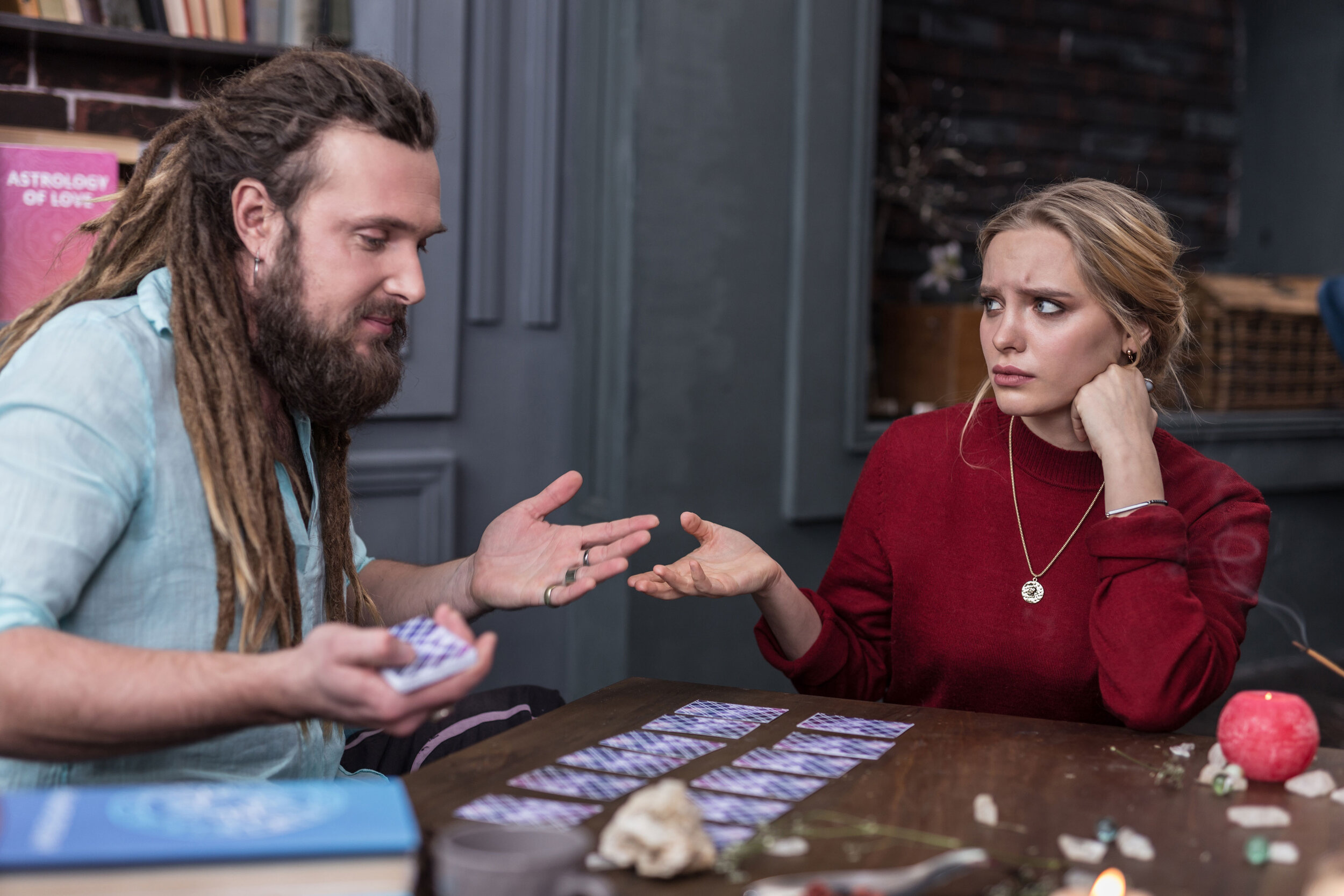Can Any Tarot Card be Good or Bad?
If you read an older tarot book, like the Eden Gray book I started with, you will see that tarotists of a certain era considered certain cards ‘good’, and others, ‘bad’. There are still many tarotists who approach the cards this way.
It is easy to think about which would be which. The Ten of Pentacles, of course, is ‘good’. The Ten of Swords is ‘bad’. The Sun is ‘good’, the Tower is ‘bad’.
Certainly, any tarotist can admit that there are cards we would rather see appear in a reading, and cards that may concern us when they appear.
Yet, after many years of professional tarot reading, I have come to a number of conclusions. Perhaps some of these conclusions may be helpful to others on their tarot journey.
How We Define Good and Bad
In life in general, my conclusion is that there is no ‘good’ or ‘bad’. What is good for the lion is devastatingly bad for the gazelle. As the lyrics of one of my favorite Grateful Dead songs go, “One man gathers what another man spills”.
I also do not think we can label people good or bad. No human is inherently good, or inherently bad. Human personalities and circumstances are way too complicated for that.
So, if good and bad cannot be a metric for people, situations, or tarot cards, what is the metric that replaces that concept? For me, it is what you like and desire, and what you do not like and do not desire. That, of course, changes from person to person, and from situation to situation.
I think our definition of good and bad comes from the monotheistic philosophy of the eternal struggle between good and evil. To me, there is nothing in the natural world that would confirm that concept as spiritual reality. I think it is more likely that this concept was designed by humans to control behavior.
However, duality does exist, and is a present concept in tarot. When we take value judgments away from the duality of light and dark, and find purpose for both, we find a deeper understanding of how duality works.
Does this sort of thinking remove from us the burden of morality? Far from it. Rather, it holds us responsible to find and justify our own moral compass, and to hold ourselves accountable for our behavior within those confines.
What Do We Do with Disturbing Tarot Images?
Not all tarot decks include disturbing images, though many do. I believe those images can be helpful to our process. When we see an image that we find disturbing, it may in fact relate to something in our lives that we find disturbing. The ability to explore this may bring us peace, healing, and understanding.
Sometimes disturbing cards appear to predict, or forewarn, unpleasant things for the future. This is probably the single most frightening aspect of tarot for many people. Sometimes the cards predict misfortune.
Yet, there can be comfort in this as well.
When a disturbing card appears, it may prepare us for a hurt or disappointment. We may not know exactly how to interpret it, or what it is referring to. Yet, when the difficult thing happens, that tarot predicted it can be a comfort. Knowing a hard thing was somehow ‘written’ in advance relieves us of the anxious feeling that we could have prevented the misfortune from happening.
What About Classic Card Interpretations that are Clearly Good or Bad?
Any proficient tarot reader knows that any card can have a wide range of meanings, depending on the context of the question, and the surrounding cards. While it is true that some cards (usually those with happier images) have more auspicious classic keywords and interpretations than others, it is good to leave room for other possible interpretations.
For example, the Sun is arguably the happiest card the deck. Yet, in certain circumstances, the Sun can refer to a narcissistic personality.
The Seven of Swords is the card of the thief, typically indicating dishonesty. Yet, it can also be the card of creative solutions.
The Three of Swords is a card of sorrow. Yet, it can also indicate an opportunity to heal.
The Five of Pentacles is a card of poverty. Yet, it can also speak to finding new opportunities.
The Ten of Pentacles is a card of wealth. Yet, it can also indicate generational and ancestral trauma.
The Ten of Swords is a devastating card. Yet, it can also advise acupuncture as a method of healing.
The Star can be about hope and healing. Yet, The Star can also refer to a person who is acting like a diva.
The Four of Cups can be about apathy, boredom, or limited choices. Yet, it can also affirm the wisdom of waiting for something better to come along.
Death is a difficult card because of its title. Yet, it often appears for pregnancy or for job promotion.
Is This Method of Tarot Reading Just Sugar-Coating Reality?
If you use this kind of critical thinking in tarot reading, you are opening yourself to more opportunity for truth-finding. Sometimes that truth is going to be what you wanted to hear, sometimes it will not be.
In the Petit Lenormand system of cartomancy, cards are designated as positive, negative, and neutral. There is no such clear-cut system in tarot interpretation. I think it is good for modern tarotists to remember this. When we are open to the idea that any card can indicate something that is helpful and fortunate, or something that is hurtful or unfortunate, we have a fuller vocabulary with which to perform a more informative and helpful reading.
